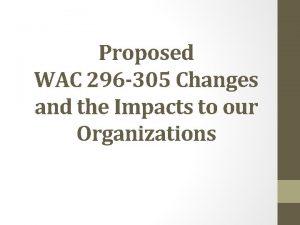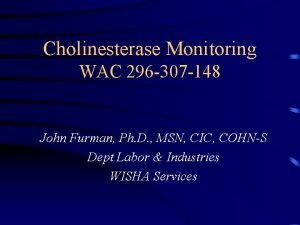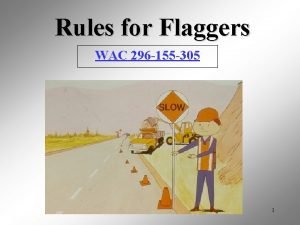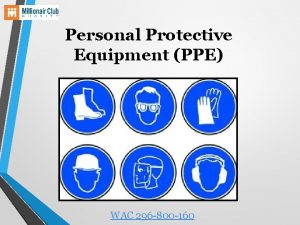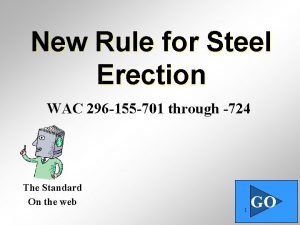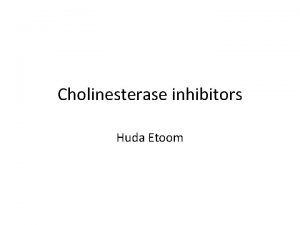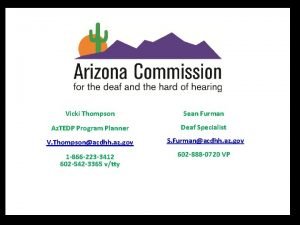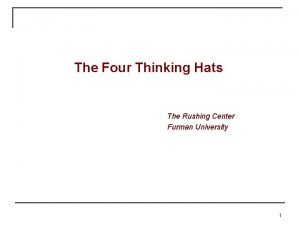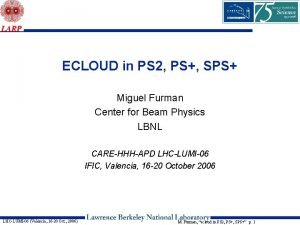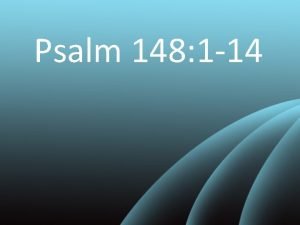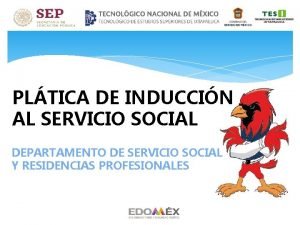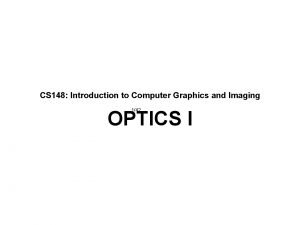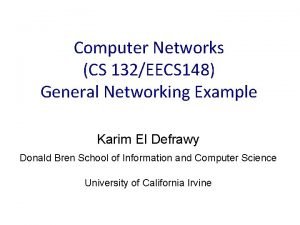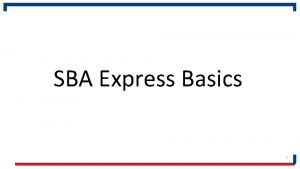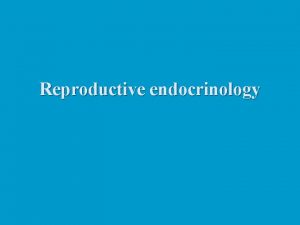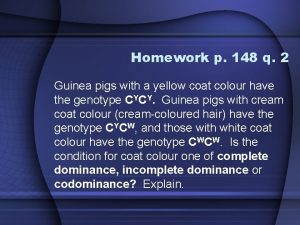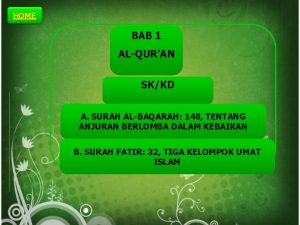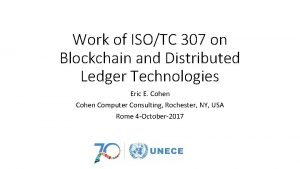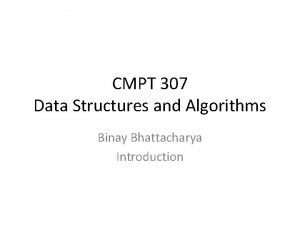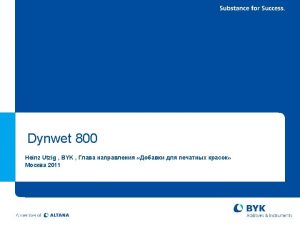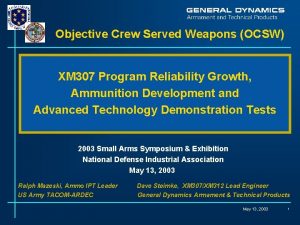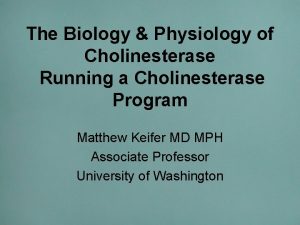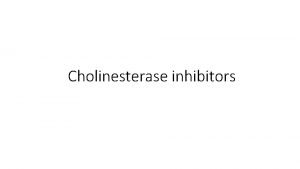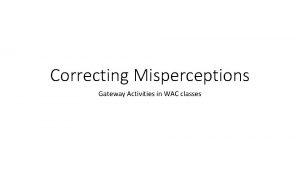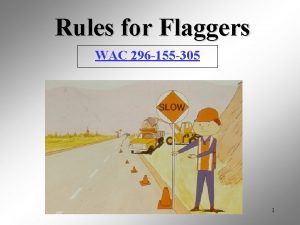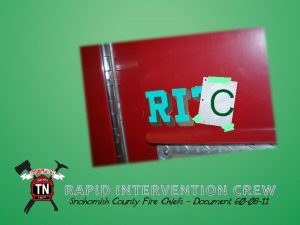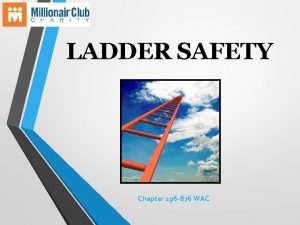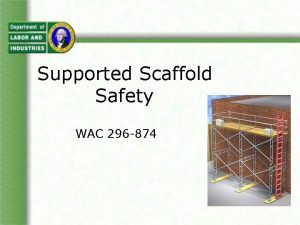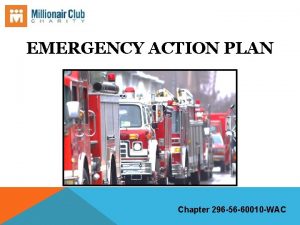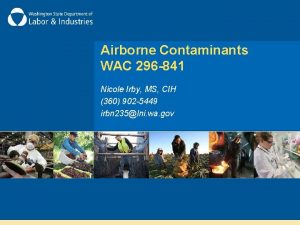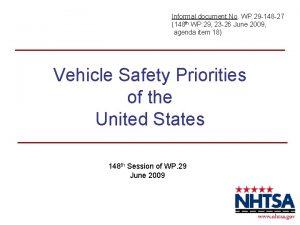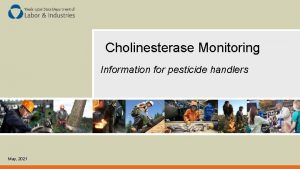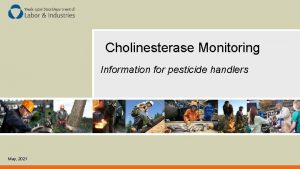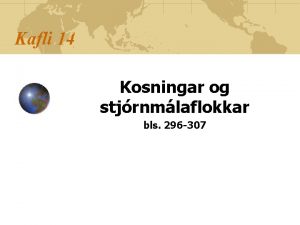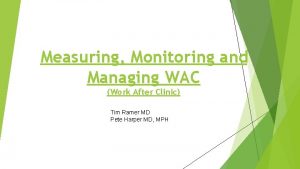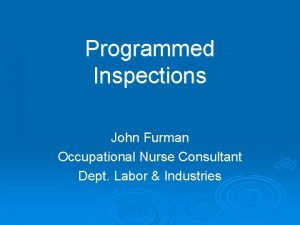Cholinesterase Monitoring WAC 296 307 148 John Furman



























- Slides: 27

Cholinesterase Monitoring WAC 296 -307 -148 John Furman, Ph. D. , MSN, CIC, COHN-S Dept Labor & Industries WISHA Services

Rule Background • 1993 - L&I adopted cholinesterase monitoring recommendation • 1995 - TAG report • 1997 - Farmworker suit • 2002 - Rios decision

Rulemaking Activities • • Stakeholder advisory group Review of best available evidence Public surveys Small business economic impact statement • Public hearings • Cost benefit analysis

Rule Benefits • • Prevention of acute and chronic illness Safer workplace Improved medical care Appropriate workers compensation Improved family health Increased productivity Hazard clarification

Numbers Effected • 1700 employers • 4800 employees • 1, 100 employees covered by medical monitoring requirements in first year • 3, 000 employees covered thereafter

Rule Costs • Approximately $925, 00 in first year • $2, 000 annually thereafter • $378, 000 legislative appropriation to mitigate medical monitoring costs

Cost Benefit Analysis • Significant risk to agricultural pesticide handlers • Ch. E monitoring provides additional and appropriate protection • Cholinesterase monitoring is both technologically and economically feasible

Rule Adoption • Adoption December 3, 2003 • Effective February 1, 2004 • Formal evaluations conducted after 2004 and 2005

Rule Scope • Agriculture sector covered by Chapter 296 -307 WAC • Employers who have workers who handle toxicity class I and II organophosphate or N-methyl-carbamate pesticides (insecticides)

Rule Scope • Pesticide handling (WAC 296 -307 -11005) – Mixing, loading, transferring or applying – Disposing of pesticides or containers – Handling opened containers – Acting as a flagger – Equipment maintenance – Entering treated areas during REI – Performing certain tasks as a crop advisor

Provide Medical Monitoring • To employees who handle OPs or CBs for : – > 50 hours in any consecutive 30 day period – > 30 hours beginning in 2005 • The 2005 threshold may be adjusted based on analysis of 2004 data

Medical monitoring • Employer contracts with a provider to: – provide baseline and periodic testing – Interpret tests and make recommendations* regarding employee’s handling • A laboratory approved by L&I must be used – The DOH Public Health Lab will be the only approved lab in 2004 -05 *sample form provided

Medical monitoring • The employer must: – Ensure that the provider is familiar with the rule – Post the provider’s name, address, and telephone number – Maintain copies of test results and recommendations • The provider will maintain test results for the employer

Service fees • Employer responsible for all costs • Providers set fees for service (individual or group contracts) • L&I will pay the PHL directly for lab costs at least through 2004

Cholinesterase testing • Provided at no cost to employee – L&I will mitigate employer costs during 2004 • Red blood cell (RBC) and plasma Ch. E tested • Baseline taken at least 30 days since last exposure (“working baseline” provision)

Cholinesterase testing • The employer may choose to test: – On a routine 30 day schedule: OR – At then end of every 30 day period when the exposure threshold has been met • Employer must follow all provider recommendations

Exemptions • Testing is not required for employee’s who handle only N-methyl Carbamates • Hours spent mixing and loading using closed systems are not counted in determining need for periodic testing

Employee participation • Employee may choose to participate or decline participation • A written consent/declination form is signed* • Provide copy of signed declination to the employer *Sample form provided

“If an employer discourages participation in cholinesterase monitoring, or in any way interferes with an employee’s decision to continue with the program, this interference may represent unlawful discrimination under RCW 49. 17. 160. ”

Cholinesterase depression • >20% from baseline requires the employer to conduct a work practice evaluation • A decrease of >30% for RBC Ch. E or >40% for plasma Ch. E requires removal from exposure • Exposure includes handling and other potential exposures (e. g. , thinning in treated areas)

Cholinesterase depression • Employees may be shifted to other duties including handling other pesticides while on medical removal • Employees may return to handling when Ch. E levels return to within 20% of baseline • Schedule and extent of medical evaluations determined by the provider

Medical removal protection • Medical removal protection benefits are provided for up to 3 months – Pay – Seniority – Other benefits

Industrial insurance • No impact on the industrial insurance system • Ch. E depression w/o symptoms not a compensable condition • Employees have the right to file an industrial insurance claim

Recordkeeping • Employer must keep records of: – medical provider – Ch. E test results (provider keeps for employer) – Provider recommendations – Work practice evaluations – Work removal dates – declination forms • All records made available to employee, employee representative, and provider

Provider responsibilities • No citable responsibilities under the rule • The employer is responsible to ensure services are provided in accordance with the rule • The provider is encouraged to visit the work site, be familiar with the pesticides and processes used, etc.

Rule evaluation • Ch. E testing added to the Laboratory Notifiable Conditions list WAC 246 -100 -001 (PHL only) • DOH maintaining an aggregate electronic data-base • DOH notifies L&I of significant depressions

Rule evaluation • L&I appoints “scientific” and “stakeholder” teams to evaluate the rule • Reports and recommendations submitted for data collected during 2004 and 2005
 Wac 296 305
Wac 296 305 Wac 296-307
Wac 296-307 Wac 296-155-305
Wac 296-155-305 Wac 296-800-160
Wac 296-800-160 Wac 296-305
Wac 296-305 When placing solid web members for beams/columns
When placing solid web members for beams/columns Acetylcholinesterase inhibitors mechanism of action
Acetylcholinesterase inhibitors mechanism of action Sean furman
Sean furman Four thinking hats
Four thinking hats Miguel furman
Miguel furman Bowling techniques
Bowling techniques Nyu furman center
Nyu furman center Shakespeare sonnets introduction
Shakespeare sonnets introduction Psalm 148:1-14
Psalm 148:1-14 Http //servsoc/inicio.aspx
Http //servsoc/inicio.aspx Cs 148 stanford
Cs 148 stanford Eecs 148
Eecs 148 Crónica de d joão i resumo capítulo 115
Crónica de d joão i resumo capítulo 115 Psaume 135 chanté
Psaume 135 chanté Sop 50 10 5
Sop 50 10 5 One pumch man 148
One pumch man 148 Homework 148
Homework 148 Al baqarah 148
Al baqarah 148 P 148
P 148 Iso tc 307
Iso tc 307 Cmpt 307
Cmpt 307 Byk 345
Byk 345 Objective crew served weapon
Objective crew served weapon
